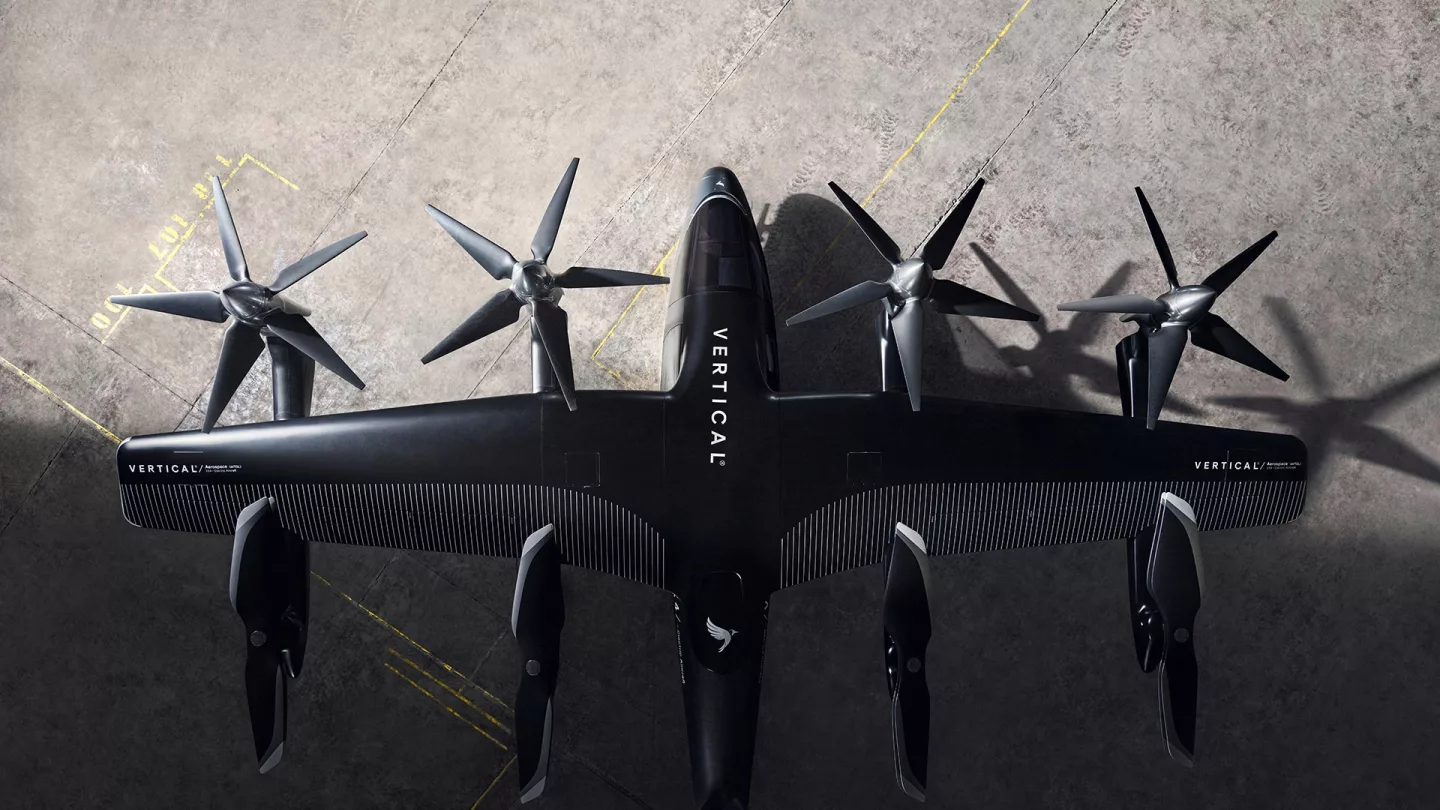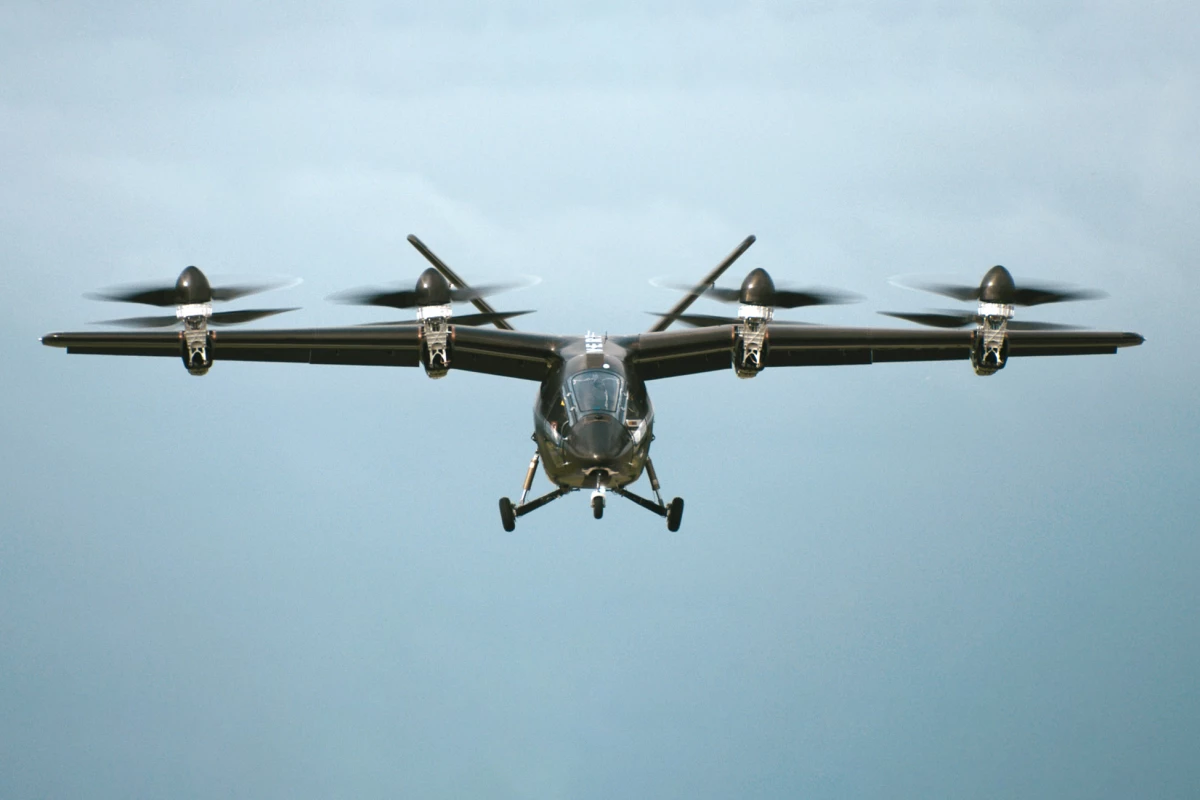Leading UK eVTOL company Vertical Aerospace has suffered an expensive-looking setback just weeks into its off-tether flight test program. Its VX4 air taxi prototype reportedly hit the deck from about 20 ft up, snapping a wing and making quite a mess.
The company has confirmed the incident in a SEC filing, stating: "On Wednesday August 9, 2023, Vertical Aerospace Ltd.’s experimental prototype aircraft was involved in an incident during flight testing at its Flight Test Centre at Cotswold Airport, UK. The aircraft was remotely piloted and there were no injuries.
"Our flight test programme is designed to establish the limits of the aircraft’s performance, and the incident occurred during an uncrewed test of the aircraft’s maneuverability during a motor failure test scenario, which is a key requirement to progress to crewed operations. We are working closely with the relevant authorities."
Vertical Aerospace has suffered what appears to be a significant setback after the electric vertical take-off and landing (eVTOL) aircraft crashed during an unmanned test flight https://t.co/4HvYnqrmCm pic.twitter.com/DZ708GsMAz
— Evans Electric (@tsport100) August 10, 2023
According to an "airfield source" speaking to Pilotweb.aero, the prototype lost control at an altitude of only about 20 ft (6 m) – but that's certainly high enough to leave a mark. In the above photo, it's apparent that the right wing of the VX4's carbon fiber airframe has acquired a jaunty new angle, and that's certainly not the only damage here. The lithium battery pack appears to have survived without catching fire, providing one positive takeaway from the incident.
This is not the first time one of these cutting-edge electric air taxis has come off second best in a disagreement with the ground. Back in February 2022, overall eVTOL market leader Joby Aviation suffered a much more extreme test flight crash, when its experimental S4 prototype, tail number N542AJ, ploughed into the California forest after a test flight that pushed airspeeds over 270 mph (435 km/h) – much faster than the S4's advertised top speed of 200 mph (322 km/h).
@jobyaviation Team was pushing the boundaries of the #eVTOL yesterday.
— Joby-Aviation-Fan (@JobyInvestor) February 17, 2022
According to Specs JOBY S4 Top speed is 200 miles / hour.
Yesterday, They were consistently pushing the boundaries - many times it crossed 230 kt and hitting 240kt (265 - 270 miles / hour )
N542AJ 🙇 pic.twitter.com/gET8aKGVRZ
But there are key differences here; Joby, for starters, was well advanced into its unmanned flight test program when it lost the prototype, having already flown hundreds of tests throughout all stages of flight, including routine transitions from VTOL mode to wing-supported cruise flight and back again. Vertical Aerospace lost its VX4 right at the beginning of its test program, operating solely in VTOL hover mode and having only just come off safety tethers.
Joby also had a second S4 prototype up and running when it lost the first, so it was able to continue testing – Vertical Aerospace doesn't, it's just lost its only full-size test aircraft – although a second prototype, closer to the company's proposed production aircraft, is in the works.
Vertical Aerospace isn't commenting yet on how bad the damage is, whether the prototype might be repairable, or what this setback might mean for the company's timelines as it pushes toward multi-region type certification and the start of manufacturing, with a monster 1,400 conditional pre-orders in the books. Earlier this year, VA pushed its expected commercial debut back from 2025 to 2026.

But such are the trials and tribulations for companies working to push (potentially) massively disruptive new technologies into the high-stakes world of aviation, where failures are very public.
Electric VTOL aircraft promise fast, quiet, clean, and most compellingly, very affordable new ways to hop across traffic or town to town. If they deliver on their promises, eVTOLs represent the democratization of 3-dimensional commuting, putting helicopter-style travel (minus the wall-shaking soundtrack) within just about anyone's reach. They could change the shape and design of future cities.
But to do so in a commercial sense, they need to prove they're every bit as safe as airline flight. Let's hope not too many more eggs are broken trying to make that omelet – but now, before there are people on board, is definitely the best time for these incidents to happen.
Source: Vertical Aerospace via Pilotweb.aero







